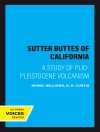The Azores archipelago consists of nine islands that emerge from the Azores Plateau in the Central Northern Atlantic, situated within the triple junction of the American, Eurasian and African lithosphere plates. Subaerial volcanic activity has been well known since the Pliocene and continues today, with several well-documented eruptions since the settlement of the islands in the fifteenth century. The origin of the Azores Plateau has been a matter of scientific debate and thus this book provides the first comprehensive overview of geological features in the Azores from volcanological, geochemical, petrological, paleontological, structural and hydrological perspectives
Cuprins
Geology.- Ages of the Azores volcanoes.- Tectonic Evolution.- Formation of rift zones and calderas of the Azorean islands.- Stratigraphy of the Azores volcanoes.- Azores Eruption styles.- The top three outcrops per island.- Pyroclastic density currents.- Paleontology.- “Santa Maria”.- Geochemistry and Petrology.- Petrology of Azorean lavas.- Mantle sources radiogenic isotopes and trace elements.- Stable non-traditional isotopes.- Distribution of volatiles.- Peridotites in the Azores.- Geophyics.- Constraining the plate boundaries in the Azores.- Historic earthquakes and present-day activity.- Shallow geophysics.- Deep geophysics.- Tomographie.- Biogeochemistry, Fluids, Seeps.- Freshwater in the Azores.- Degassing in the Azores (subaerial and submarine).- Biodiversity around active submarine volcanoes.- Volcanoes and Society.- Hazard assessment.- Monitoring techniques.










